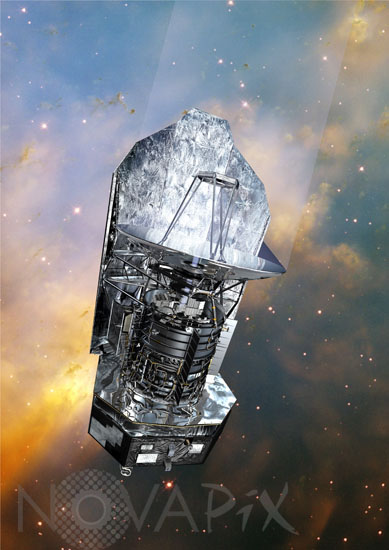Photo Agency - Astronomy - Space - Nature

Satellite Herschel. Artwork
author: ESA/Novapix
reference: e-sou12-20002
Image Size 300 DPI: 21 * 29 cm
ESA's Herschel Space Observatory (formerly called Far Infrared and Submillimetre Telescope or FIRST) will solve the mystery of how stars and galaxies were born. Infrared astronomy is as young as it is fruitful. In less than three decades infrared astronomers have unveiled tens of thousands of new galaxies, and have made discoveries as surprising as the huge amounts of water vapour that fill the galaxy. Yet scientists know there is still much more to discover. Objects such as other planetary systems, or processes like the birth of galaxies in the early universe, can best be studied with infrared space telescopes in space. This is the reason for ESA's Herschel. ESA's Herschel Space Observatory will be bigger and better than any of its predecessors. Moreover, it will observe at wavelengths never covered before. It will be located 1.5 million kilometres away from Earth, farther than any previous space telescope. Due for launch in 2009, Herschel is one the Cornerstone missions ESA's Horizons 2000 programme. Herschel is a key project space astronomy in the next millennium.
Keywords for this photo:
2009 - ARTIFICIAL SATELLITE - ASTRONOMICAL SATELLITE - ASTRONOMY - HERSCHEL - ILLUSTRATION - INFRARED - MILLIMETER - SPACE - TEMPERATURE -
Contact : Stéphane Aubin +33-(0)9-51-26-53-76
© Novapix - All rights reserved


